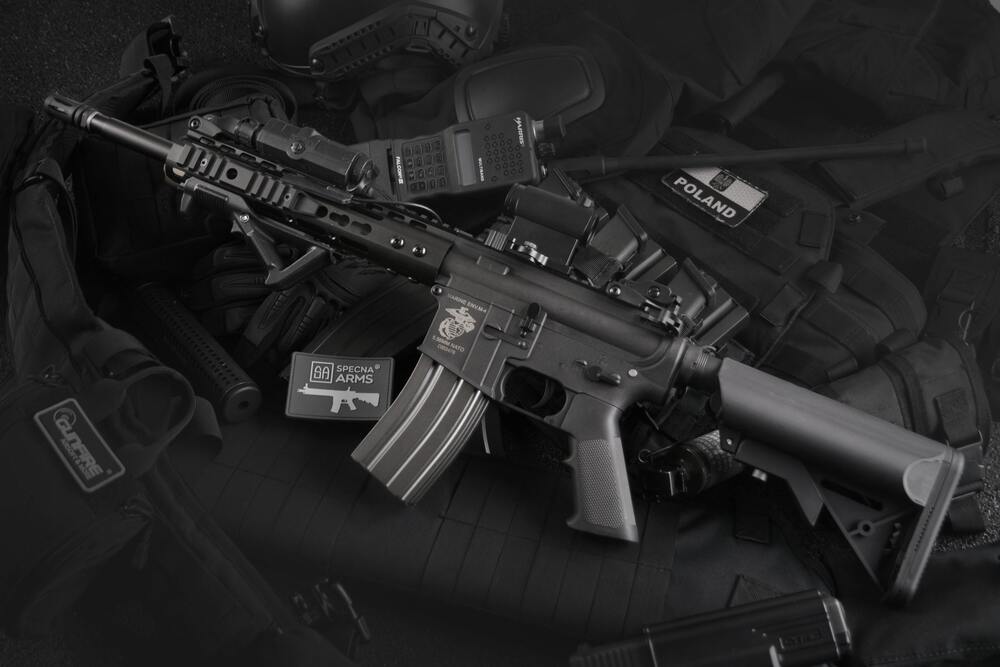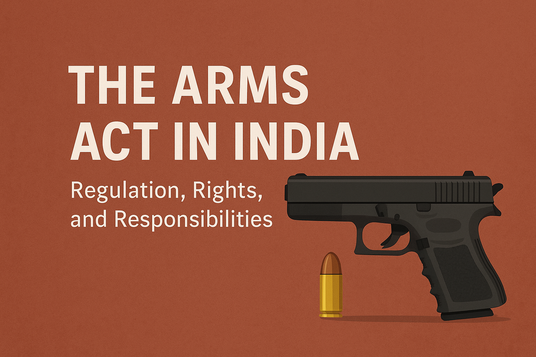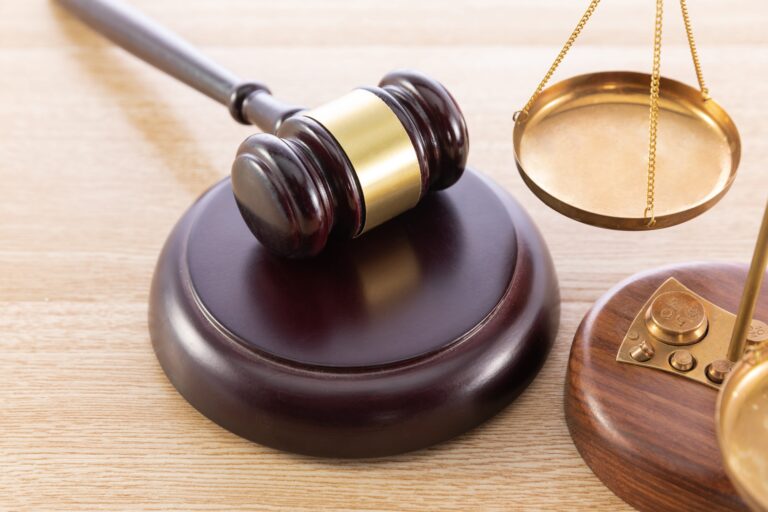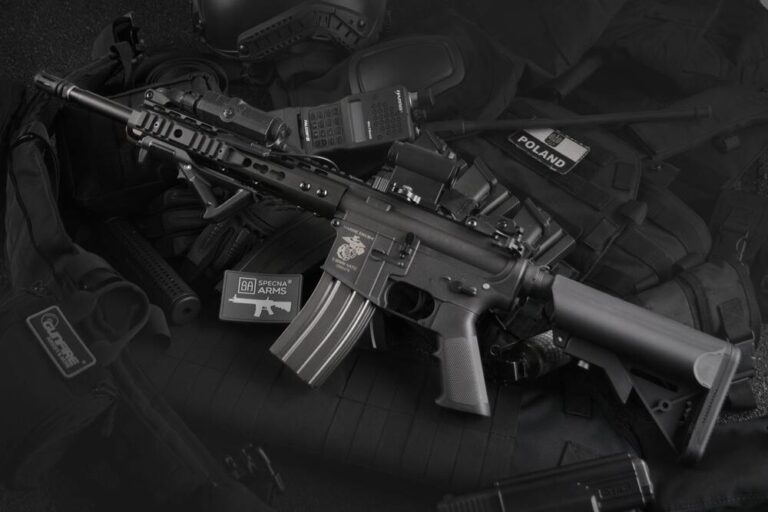
The Arms Act in India: Introduction
Guns and weapons have always carried a certain fascination. From the days of kings and empires to the modern era, arms have been regarded as symbols of power, authority, and sometimes prestige. But in a democratic society governed by the rule of law, the possession and use of arms cannot remain unregulated. In India, this responsibility is outlined in the Arms Act, a key piece of legislation that balances the rights of individuals with the safety of society at large. This blog aims to simplify the Arms Act, explain its importance, highlight key provisions, and discuss how it impacts citizens today.
Historical Background of the Arms Act
The roots of arms regulation in India go back to the British colonial period. After the Revolt of 1857, the British feared that widespread access to firearms could lead to another uprising. To suppress this, they passed the Indian Arms Act of 1878, which imposed strict control over Indians while allowing Europeans easier access to weapons.
Post-independence, India needed its own legislation that was fair, practical, and in tune with the security needs of a sovereign nation. This led to the enactment of the Arms Act, 1959, which, along with the Arms Rules of 1962, still governs arms possession, manufacturing, and trade in the country today.
Objectives of the Arms Act
The Arms Act, 1959, is not designed to ban weapons altogether but to regulate them responsibly. Its objectives include:
- Ensuring public safety – Preventing misuse of firearms in crimes, riots, or unlawful activities.
- Regulating possession and manufacture – Allowing only licensed individuals and companies to deal with arms.
- Balancing rights and restrictions – Recognising the right of individuals to possess arms for self-defence while prioritising the security of society.
- Standardising laws – Providing a uniform legal framework across the country.
Key Provisions of the Arms Act, 1959
Here are some important features of the Act that every citizen should know:
1. Definition of Arms
The Act defines arms broadly to include firearms (pistols, rifles, shotguns, revolvers), sharp-edged weapons, and certain prohibited arms like automatic weapons and explosives.
2. Licensing Requirement
- No person can acquire, possess, or carry any firearm without a valid license issued by the licensing authority (usually the District Magistrate).
- Licenses are generally granted for self-defence, crop protection, or sports.
3. Categories of Arms
The law distinguishes between:
- Prohibited Arms – Automatic weapons, military-grade firearms.
- Non-Prohibited Arms – Licensed firearms like handguns and sporting rifles.
4. Restrictions on Manufacture and Sale
Only government-authorised factories and licensed dealers can produce or sell arms. Unauthorised manufacture or smuggling of arms is treated as a serious crime.
5. Punishments for Violations
The Act imposes strict penalties for illegal possession, use, or trafficking of arms. Depending on the offence, punishment may include imprisonment up to 7 years along with fines.
6. Renewal and Revocation of License
Licenses must be renewed periodically. Authorities have the power to revoke a license if the holder misuses the weapon, threatens public safety, or has criminal charges against them.

Why is the Arms Act Important?
- Public Order and Safety – By keeping firearms in check, the Act helps reduce gun violence and criminal misuse.
- National Security – Prevents illegal arms trade and ensures weapons do not fall into the wrong hands.
- Accountability – Every licensed weapon is traceable, making law enforcement more effective.
- Balancing Rights – Recognises the need for citizens to protect themselves while ensuring the collective security of society.
Arms Act and Self-Defence
One of the most debated aspects of the Act is its relationship with the right to self-defense. Article 21 of the Indian Constitution guarantees the right to life, which naturally includes the right to defend oneself. However, this does not automatically translate into the unrestricted right to own firearms.
The Arms Act ensures that only those who genuinely need firearms for protection, sports, or agricultural purposes can access them—after strict background checks and licensing procedures.
Amendments to the Arms Act
Over the years, the Act has been amended to meet changing social and security needs.
- Arms (Amendment) Act, 1983 – Introduced stricter punishments for illegal possession.
- Arms (Amendment) Act, 2019 – Reduced the number of firearms a person can own from three to two. It also increased penalties for illegal possession, smuggling, and organised crime related to weapons.
These amendments reflect India’s commitment to keeping arms regulation up to date with current realities.
Challenges in Implementation
Despite its strong framework, the Arms Act faces several challenges:
- Illegal Arms Trade – Black markets continue to supply weapons to criminals.
- Delay in Licensing – Genuine applicants often face bureaucratic hurdles and long waiting periods.
- Awareness Gap – Many citizens are unaware of the rules and procedures under the Act.
- Misuse by Licensed Holders – In some cases, even licensed weapons have been misused in crimes.
Addressing these challenges requires better enforcement, modernization of licensing systems, and stronger public awareness campaigns.
Comparative Perspective: Arms Laws in Other Countries
- United States – The Second Amendment gives citizens the right to bear arms, leading to widespread gun ownership but also higher gun-related crimes.
- United Kingdom – Very strict regulations; private gun ownership is rare.
- India – Falls somewhere in between, allowing private ownership but under strict control and licensing.
This balanced approach ensures that while individuals can protect themselves, the larger public interest is not compromised.
The Human Angle: Arms and Society
Beyond law and order, arms also influence society at a psychological and cultural level. In rural areas, owning a gun may symbolize security and prestige. In urban centers, it may be more about personal protection. However, widespread gun culture often leads to an increase in violence, accidents, and fear.
The Arms Act aims to create a culture where weapons are seen not as symbols of power, but as tools of necessity—regulated, controlled, and respected.
Conclusion
The Arms Act, 1959, is not just a piece of legislation—it is a reflection of India’s approach to balancing individual rights with collective security. By regulating the acquisition, possession, manufacture, and use of arms, the Act ensures that while genuine needs such as self-defence, sports, and agriculture are recognised, the larger threat of illegal weapon misuse is curtailed.
In a country as vast and diverse as India, with its mix of urban, rural, and border regions, arms regulation becomes even more crucial. Unchecked access to weapons could lead to a rise in violent crimes, social unrest, and threats to national security. The Arms Act acts as a safeguard against such dangers by ensuring that every firearm is accounted for and responsibly held.
At the same time, it is important to remember that laws alone cannot guarantee peace and safety. Effective enforcement, awareness among citizens, and modernisation of licensing systems are equally important. Citizens must also recognise their responsibility—owning a weapon is not a matter of prestige or power, but of accountability and discipline.
As gun violence continues to be a global issue, India’s cautious and balanced framework offers a middle path—neither an absolute right to bear arms nor a complete ban, but a regulated system rooted in the principle of public welfare. The Arms Act, therefore, is not merely about controlling weapons; it is about shaping a society where trust in law prevails over the fear of arms.



